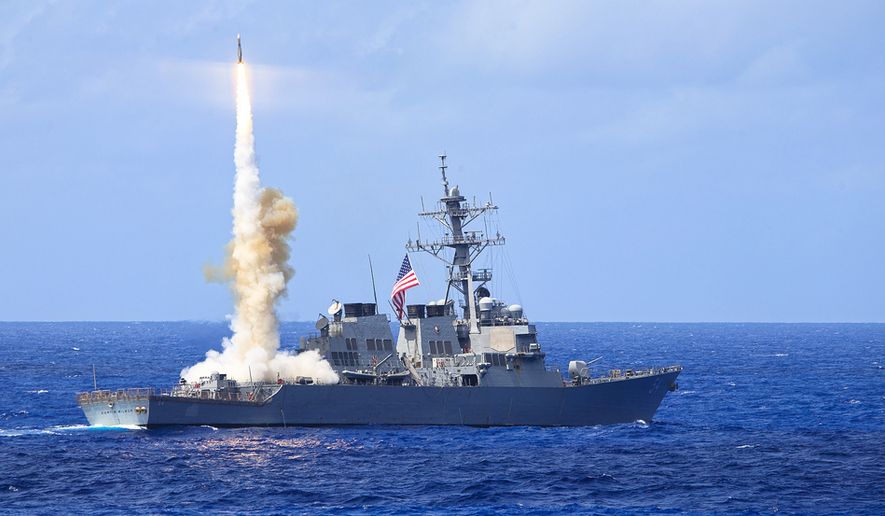Navy sailors harbor “widespread mistrust” in the admirals who command them, complaining of poor leadership and a disciplinary environment that tolerates absolutely no mistakes, says a survey of the fleet.
The disgruntlement runs deepest in the officer corps, where scores of commanders have been relieved of duty in recent years.
“Senior leadership should stop proactively highlighting the reliefs for cause of commanding officers, command master chiefs, and other senior enlisted advisors,” said the report “2014 Navy Retention Study.” “What was originally intended to demonstrate accountability to the public has, instead, resulted in a significant breach of trust with our sailors and resulting in an almost ’reality TV’ mentality.”
The independent survey was released amid complaints by some aviators about excessive political correctness as the military seeks to stamp out sexual harassment and misconduct in an increasingly gender-integrated Navy.
“Most troubling is the perception sailors hold of senior leadership,” the report says under the heading “Widespread Distrust of Senior Leadership.”
“Sailors feel strongly about their distrust of senior leadership, and believe the Navy has a significant risk-averse culture and zero-defect mentality,” the report says. “Officers in particular hold an incredibly negative view of the current state of affairs, with vast majorities decrying the overwhelming perception of a risk averse and zero-defect mentality culture.”
PHOTOS: BOOM! U.S. military turns ISIS targets to rubble
When asked whether they agreed that the Navy operates a risk-averse culture, nearly 90 percent of officers answered “yes.”
Sailors also do not like wartime at sea deployments that stretch from six months up to nine months.
The report, based on an Internet survey that garnered responses from more than 5,000 sailors, was compiled by a group of active-duty Navy sailors and civilian researchers, with the Navy’s support.
It was led by Cmdr. Guy Snodgrass, a “Top Gun” F-18 Hornet pilot who was a speechwriter for the Navy’s top admiral and now is executive officer of a carrier strike fighter squadron. Cmdr. Snodgrass has argued that the work climate will lead to a retention crisis if not addressed.
Cmdr. Christopher Servello, a spokesman for the chief of naval personnel, said: “Not sure we agree with all of the conclusions that were drawn, but we are grateful for the effort done by this group. … Much of the raw data collected matches what we have seen in our own surveys.”
Cmdr. Servello said actions being taken include “pushing decision-making down to the lowest levels of command and empowering units’ leaders to train and focus on war fighting first.”
PHOTOS: Top 10 U.S. fighter jets
He said retention is above average for officers and enlisted, but there are “pockets that have leadership’s attention.” These include the nuclear Navy, junior flight officers and special warfare, which includes the SEALs.
Cmdr. Snodgrass’ report language is tamer than an article he wrote last winter on the U.S. Naval Institute website.
“Unfortunately,” Cmdr. Snodgrass wrote, “the fact that a growing number of quality officers have already left the service or are planning to head for the doors seems to be going undetected by senior leadership.”
He wrote of “a recent shift within the Navy to eradicate behavior that is, by its very nature, ineradicable.”
“Put simply, there is no dollar amount that can be spent, or amount of training that can be conducted, that will completely eradicate complex issues such as suicide, sexual assault, or commanding officer reliefs for cause — yet we continue to expend immense resources in this pursuit,” he said. “Sailors are bombarded with annual online training, general military training, and safety stand-downs — all in an effort to combat problems that will never be defeated.”
• Rowan Scarborough can be reached at rscarborough@washingtontimes.com.




Please read our comment policy before commenting.